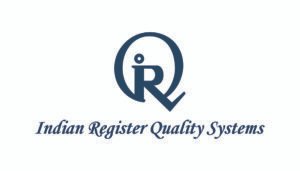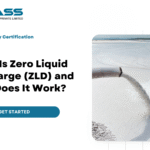ISO 45001:2018 Standard
September 17, 2021 2024-12-12 11:57ISO 45001:2018 Standard
An Overview by Team IRQS - ISO Certification Body
ToggleThe world is changing. The way people work, the products and services they buy, and the way businesses operate are all changing at breakneck speed. The pace of change is accelerating and the impact it is having on businesses and their bottom-line is profound. Businesses need to change with it. The ISO 45001 standard is one of the most widely adopted safety standards in the world. It is the standard that underpins many other international standards. However, the standard is not static and is undergoing a number of changes.
In this article, we will give you a brief overview of the standard and how they will impact your organization.
ISO 45001:2018 Standard
The ISO 45001:2018 standard is the most recent version of the ISO 45001 standard. It was published in March 2018, replacing the OHSAS 18001 management system standard.
The new standard is part of a broader effort by the International Organization for Standardization (ISO) to align and update all of the specification standards for the management of Environmental, Energy, Health and Safety, and Quality (EEHSQ).
7 Key in the ISO 45001 Standard
- Context of the Organization
“Clause 4 of ISO 45001 – Context of the Organization” requires that participants view occupational health and safety management in a broader context. This includes regulations and governance as well as organizational culture and its impact on all stakeholders, including workers, customers and more.
The context of the organization includes the following key elements:
- Additionally to workers (managers, supervisors, and senior leaders are defined as workers in ISO 45001), there are also other parties interested in the process.
- Needs and expectations of workers and other interested parties
- Legal requirements
- Different needs between managers and non-managers
As the organization develops the OH&S management system, it will consider internal and external factors, employee needs, and the work being performed. The context of the organization must be documented and accessible.
- Leadership and Worker Participation
Top management shall demonstrate leadership and commitment. The engagement of top management is essential to support the organization by providing resources and promoting continuous improvement. A key responsibility of the top management is to establish, implement and maintain the OH&S policy, and to ensure that it is communicated within the organization and shared with relevant interested parties.
When it comes to the health & safety of workers, it is essential that these same workers are consulted about the OH&S Management System and participate in implementing the safety processes as well. Therefore, the organization must determine the processes necessary to consult with workers at all levels of the organization in all aspects of the development, planning, implementation, and performance evaluation of the OH&S Management System.
- Planning
The ISO 45001 standard consolidates several clauses (4.3.1, 4.3.2, and 4.3.3) in OHSAS 18001 regarding the definition of objectives, identifying opportunities, and managing risks. In addition to addressing opportunities and measures for effectiveness, the new standard incorporates legal requirements. Organizations must consider the available resources, identify the responsible staff, timelines, and associated metrics when setting health and safety objectives. As part of this change, there will be additional documentation, formalizing organizational goals and priorities in a more systematic manner than with OHSAS 18001.
- Support
ISO 45001 section 7 revises several of the support provisions found in OHSAS 18001. Many procedural requirements are abandoned in favour of more detailed documentation. Furthermore, there is a greater emphasis on communication – ISO 45001 mandates defining and measuring communication objectives. This is related to a new emphasis on awareness, where managers must communicate with workers about policies, risks and hazards, as well as the results of any accident investigations and other official inquiries and potential changes.
- Operation
Under the general operation section of the standard, ISO 45001 introduces several new requirements. In section 8.1.2, risk management principles are arranged according to a hierarchy of controls. Furthermore, it highlights their occupational health and safety requirements as well as identifies potential sources of operational change. The changes may include new personnel or equipment, changes to working conditions, or new regulatory requirements.
Further, the new provisions strengthen requirements and controls related to outsourced work, procurement processes, and communications when dealing with internal and external contractors. In addition, ISO 45001 features an expanded section devoted to emergency preparedness.
The operational controls of an activity must be able to accommodate both new and existing hazards and risks, according to ISO 45001. In this way, the overall occupational health and safety management system become more flexible and resilient.
- Performance Evaluation
In many instances, the new standard strengthens, expands, or modifies the outgoing standard’s evaluation requirements. Monitoring and performance results must now be documented. In keeping with the new organizational context emphasis, these benchmarks should also take into account additional factors, such as legal requirements, risks, opportunities, and objectives.
In addition to regulating compliance and internal and external auditing requirements, ISO 45001 includes more detailed requirements. As a result of these changes, the organization’s workers will be actively engaged — workers must be aware of the company’s compliance status, and management must inform interested parties about audit results. The new standard also explores risks and opportunities as part of management review.
- Continual Improvement
Continual improvement is a core value of all ISO systems. In ISO 45001, occupational health and safety management requires identifying nonconformities and taking action. In the new standard, preventive action is no longer considered a distinct concept. Instead, prevention becomes a fundamental requirement of the system as a whole.
For example, when an incident occurs, compliant organizations conduct a root cause analysis and make appropriate changes to ensure similar incidents don’t occur again. It is no longer a reactive system — instead, it helps drive continuous improvement through nonconformities.
Get ISO 45001 Certified!
We believe every business owner should get certified to ISO 45001. It is a simple set of standards, which will help you to manage your business more efficiently, improve your product and service offerings and make sure you are always in compliance with current regulations.
To receive a quote, write us at irqs.marketing@irclass.org. We can answer any questions you might have, and you can choose the package that matches your needs.
Recent Posts
Follow us on
Categories
ISO Certification Body in India | Trusted Certification Experts in India
IRQS is a leading ISO certification body with 25+ years of experience, offering ISO certification and training services to over 5,000 clients worldwide.
ISO 9001 Certification Body - Best Service & Lowest Price
Apply for ISO Certification in India. IRQS is one of the leading Certification bodies that offers internationally recognized ISO certification
Cities we cater for ISO Certifications in India: iso certification in india, iso certification body, iso certification in Mumbai, iso certification in Bangalore, iso certification in Ahmedabad, iso certification in Bhavnagar, iso certification in Kolkata, iso certification in Chennai, iso certification in Delhi, iso certification in Goa, iso certification in Hyderabad, iso certification in Kandla, iso certification in Kochi, iso certification in Pune, iso certification in Bhopal, iso certification in Vadodara, iso certification in Tiruchirapalli, iso certification in Visakhapatnam, iso certification in Port Blair, iso certification in PARADIP, iso certification in Surat, iso certification in JAMNAGAR, iso certification in KAKINADA, iso certification in COIMBATORE, iso certification in TRICHY
By Certification: ISO 9001 certification, Quality Management System (QMS) certification, ISO 14001 certification, Environmental Management Systems (EMS) certification, ISO 45001 certification, Occupational Health and Safety Management Systems (OHSMS) certification, ISO 50001 certification, Energy Management Systems (EnMS) certification, ISO 27001 certification, Information Security Management Systems (ISMS) certification, ISO 27701 certification, Privacy Information Management System certification, FAMI-QS Certification, Feed Additives and Pre-mixtures Quality System Certification, BRCGS certification, Brand Reputation through Compliance Global Standards, IATF 16949 certification, Automotive Quality Management Systems Certification, ISO 22000 certification, Food Safety Management Systems (FSMS) certification, FSSC 22000 Certification, Food Safety System Certification (FSSC) certification, Ayush Certification, Ayush Mark Certification, fssai third party audit, food safety auditing, ISO 21001 Certification, Educational Organization Management System (EOMS) certification, ISO 28000 Certification, Security Management System for Supply Chain (SCSMS) certification, ISO 13485 Certification, Medical Device Quality Management System Certification, SOC 1 Report, SOC 2 Report, IMS certification, integrated management system certification, GDPR Certification, general data protection regulation certification, SOC 2 Certification, SOC 2 Compliance, service organization controls certification, VAPT certification, Vulnerability Assessment and Penetration Testing Certification, ISO 22301 Certification, bcms certification, Business Continuity Management Systems certification
By Sector: ISO Certification for Engineering & Manufacturing, ISO Certification for Automotive, ISO Certification for Health Care, ISO Certification for Food & Beverages, ISO Certification for IT & ITES, ISO Certification for Marine, ISO Certification for Education, ISO Certification for Oil & Gas, ISO Certification for Construction, ISO Certification for Energy, ISO Certification for Retails, ISO Certification for Defence, ISO Certification for Medical Device, ISO Certification for Mining, ISO Certification for Financial Services
By Training: ISO 9001 training, ISO 9001 Lead Auditor Training, QMS training, ISO 14001 training, ISO 14001 Lead Auditor Training, ISO 45001 Training, ISO 45001 Lead Auditor Training, ISO 27001 Training, ISO 27001 Lead Auditor Training, ISO 22301 training, ISO 22301 Lead Auditor training, ISO 9001 Internal Auditor, ISO 14001 Internal Auditor, ISO 45001 Internal Auditor, Integrated Management Systems (IMS) Training, IATF Internal Auditor Training, FSSC 22000 Internal Auditor Training, ISO 22000 Internal Auditor Training, ISO 50001 Internal Auditor Training, ISO 21001 Internal Auditor Training, ISO 13485 Internal Auditor Training, ISO 27001 Internal Auditor Training, ISO 28000 Internal Auditor Training, IRCA accredited training
By Sustainability: esg services, esg solutions, esg certification courses, sustainability certification courses, life cycle assessment certification, sustainable development certificate, life cycle analysis certification, sustainability certification program, sustainability verification & Validation, sustainability report assurance, sustainability assurance, sustainability reporting verification & Validation, sustainable claim verification & Validation, green house emissions & assurance, pas 2050 certification, pas 2050 verification, carbon footprint of products, carbon footprint solutions, iso 14067 certification, iso 14067 verification & Validation, iso 14064 certification, iso 14064 verification & Validation, carbon footprint verification, ghg verification, iso 14064 certification course, iso 14064 lead Implementor training, iso greenhouse gas standards, pas 2060 certification, pas 2060 carbon neutral certification, pas 2060 verification, carbon neutrality standard & certification, carbon neutral verification, carbon footprint management, carbon emission management, pas 2080 certification, carbon management in infrastructure, pas 2080 verification, greenhouse gas emissions management, iso 26000 training, social responsibility management system, csr management system, social responsibility lead implementor, life cycle assessment course, life cycle assessment certification, lca course, life cycle analysis course, life cycle assessment training, iso 14040 training, iso 14044 training, life cycle assessment training program, iso 14064 certification, iso 14064 training, iso 14064 certification course, iso 14064 lead auditor training, iso 14067 training, iso 14067 certification, product carbon footprint lead implementor, ghg accounting, green house gas accounting, lead verifier certification program, iso ghg accounting, sustainability reporting, esg reporting, gri standards, csr reporting, gri reporting standards, global reporting initiative standards, gri sustainability reporting, sustainability reporting in line with gri standards, business responsibility and sustainability reporting, brsr training, iso 20400 training, sustainable procurement awareness, sustainable procurement, iso 27001 lead auditor, iso 27001 lead implementer, iso 27001 implementer, water footprint management, iso 14046 training, water footprint verification, carbon border adjustment mechanism, cbam regulation, cbam training, AA1000 assurance, reasonable level assurance, limited level assurance, ISAE3000 Assurance, ISAE3410 Assurance, LCA Critical review, CDP verification and validation, BRSR assurance, Zero waste to landfill certificate, responsible plastic management, Scope 1, 2, and 3, Upstream and downstream waste management, Marine Stewardship Council responsible fishing standard
Other Services: Testing Services, HKC and EU Certification, Ship Recycling Regulations, Ship Recycling Training, Coal Inspection Testing, Coal Sampling and Testing, green audit, Environmental Audit, Cyber Security, ResponsibleSteel
List of Top ISO Certification Companies in India
List of iso certification body in india, Top 10 ISO certification bodies in India, ISO certification body list, List of ISO 9001 Certification bodies in India, Who can issue ISO certification in India, ISO certification list, ISO certification for individuals, ISO certification full form






